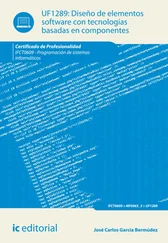Why Musashi here? Because of three characteristics that his fghting technique has with the development recommendations I give in this book and apply myself: Do not develop an attachment to any one weapon or any one school of fighting; Practice and observe reflectively Your goal is to win, not to look good.
At the time of his writing, warriors formed schools around particular stances, styles, weapons and tactics. His view was that each had its merits and weaknesses, and one should move across the range of them without getting stuck in any one. This is exactly my thoght regarding design techniques. Don't get stuck in UML, RUP, CMM, SEI, XP, CRC (insert your favorite school, tool or acronym here). Use whichever you need at the instant you need it. Know what you need, so you know which one to pick up and when to put it down.
Reflective practice has been discussed throughout this book.
Winning the software development game is shipping the software. If you can do so without process, do so. My favorite-ever recommendation to a group was,
"What? You only have a five-week project with three developers who have done this before, with the same technology? You don't need a development coordinator - just do it and go home."
Musashi said, "Do not do anything useless." Musashi cared about winning the game, which in his case was life-or-death. I am attached to delivering the software. The prettiness of the dance doesn't matter if the software comes out at the wrong time.
Let's see how Musashi says it. Notice even his attention to the Shu-Ha-Ri concept, and development of skill. Keep in mind at all times that the "opponent" in software development is the problem to be solved. "Killing the opponent" is delivering the software and winning the game. Here are some of his words (or Cleary's translation of them).
"The Book of Five Rings" (Page numbers from Barnes & Noble 1993.)
Page Quote
1. Now, in composing this book, I have not borrowed the old saying of Buddhism or Confucianism, nor do I make use of old stories from military records or books on military science...
2. The field of martial arts is particularly rife with flambouyant showmanship, with commercial popularization and profiteering on the part of both those who teach the science and those who study it. The result of this must be, as someone said, that "amateuristic martial arts are a source of serious wounds." ...
3. The master carpenter, knowing the measurements and designsof all sorts of structures, employs people to build houses. In this respect, the master carpenter is the same as the master warrior.... As the master carpenter directs the journeymen, he knows their various levels of skill and gives them appropirate tasks... Efficiency and smooth progress, prudence in all matters, recognizing true courage, recognizing different levels of morale, instilling confidence, and realizing what can and cannot be reasonably expected -- such are the matters on the mind of the master carpenter. The principle of martial arts is like this...
4. Speaking in terms of carpentry, soldiers sharpen their own tools, make various useful implments, and keep thim in their utility boxes... An essential habit for carpenters is to have sharp tools and keep them whetted...
5. You should observe reflectively, with overall awareness of the large picture as well as precise attention to small details...
6. Having attained a principle, one detaches from the principle; thus one has spontaneous independence in the science of martial arts and naturally attains marvels: discerning the rhythm when the time comes, one strikes spontaneously and naturally scores...
7. In my individual school, one can win with the long sword, and one can win with the short sword as well. For this reason, the precise size of the sword is not fixed. The way of my school is the spirit of gaining victory by any means...
8. When your life is on the line, you want to make use of all your tools... We find that whatever the weapon, there is a time and situation in which it is appropriate... Both the spear and the halberd depend on circumstances; neither is very useful in crowded situations... they should be reserved for use on the battlefield... [the bow] is inadequate for seiging a castle...
9. In the present age, not only the bow but also the other arts have more flowers than fruit. Such skills are useless where there is a real need...
10. You should not have any particular fondness for a particular weapon, or anything else for that matter. Too much is the same as not enough... Pragmatic thinking is essential...
11. Whatever guard you adopt, do not think of it as being on guard; think of it as part of the act of killing...
12. Whether you adopt a large or small guard depends on the situation; follow whatever is most advantageous...
13. (FIRST TECHNIQUE)...your sword now having bounced upward, leave it as it is until the opponent strikes again, whereupon you strike the opponent's hands from below...
14. (SECOND TECHNIQUE) If your sword misses the opponent, leave it there for the moment, until the opponent strikes again, whereupon you strike from below, sweeping upwards...
15. (THIRD TECHNIQUE) ... as the opponent strikes, you strike at his hands from below... as he tries to knock your sword down, bring it up in rhythm, then chop off his arms sideways. The point is to strike an opponent down all at once from the lower position just as he strikes...
16. Having a position without a position, or a guard without a guard, means that the long sword is not supposed to be kept in a fixed position... Where you hold your sword depends on your relationship to the opponent, depends on the place, and must conform to the situation; wherever you hold it, the idea is to hold it so that it will be easy to kill the opponent... Even though you may catch, hit, or block an oppononent's slashing sword, or tie it up or obstruct it, all of these moves are opportunities for cutting the opponent down. This must be understood...
17. ...how to win using the long sword according to the laws of martial arts. This canot be written down in detail; one must realize how to win by practice...
18. ... the power of knowledge of the art of the sword. This is something that requires thorough examination, with a thousand days of practice for training and ten thousand days of practice for refinement...
19. Other schools become theatrical, dressing up and showing off to make a living, commercializing martial arts... Do you think you have realized how to attain vitory just by learning to wield a long sword and training your body and your hands? This is not a certain way in any case...
20. ...the views of each school, and the logic of each path, are realized different, according to the individual person, depending on the mentality...
21. Thus in my individual school there is an aversion to a narrow, biased attitude...
22. In my school, no consideration is given to anything unreasonable; the heart of the matter is to use the power of the knowledge of martial arts to gain victory any way you can...
Applying Musashi to Software Development
If you read this after you have read the book, you will recognize that I share three things with Musashi. The last I keep different.
Appropriate tool, appropriate technique. Know your tools, know what you need at the moment, and you will know how to get value out of the tools at your disposal, even if they aren't perfect.
Various tools can be brought to bear to cover the needs of the project, even if they were not originally constructed for software development. When I am given a CASE tool to use, I exclude from use all those capabilities of the tool that do not lend value to the project at hand. While on the one hand this is an underutitlization of an expensive tool, my goal is not to use a tool to its maximum, it is to deliver software.
Читать дальше










